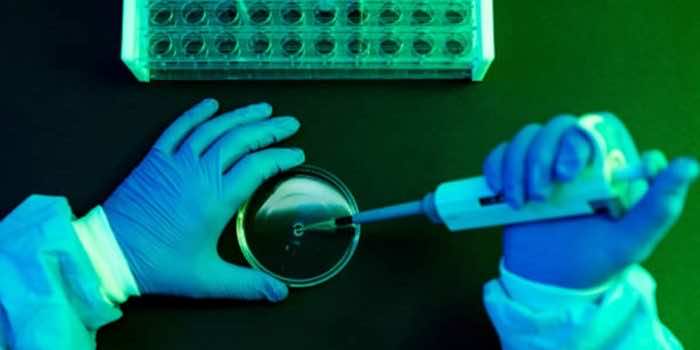Researchers have developed the world’s first “synthetic embryos” and now the need for sperm, eggs and fertilization can be bypassed entirely.
Scientists at the Weizmann Institute in Israel found that stem cells from mice could be made to self-assemble into early embryo-like structures with an intestinal tract, the beginnings of a brain, and a beating heart.
Researchers believe this development will reduce animal experimentation and eventually lead to new sources of cells and tissues for human transplantation. For example, skin cells from a leukemia patient could potentially be transformed into bone marrow stem cells to treat their condition.
“Remarkably, we show that embryonic stem cells generate whole synthetic embryos, meaning this includes the placenta and yolk sac surrounding the embryo,” said Prof Jacob Hanna, who led the effort. “We are truly excited about this work and its implications.” The work is published in Cell.

The synthesized cells were compared with natural mouse embryos. The synthetic embryos were 95% the same in terms of their internal structure and the genetic profiles of the cells.
Hanna said synthetic embryos were not “real” embryos and did not have the potential to develop into live animals, or at least they hadn’t when they had been transplanted into the wombs of female mice.
“In Israel and many other countries, such as the US and the UK, it is legal and we have ethical approval to do this with human-induced pluripotent stem cells. This is providing an ethical and technical alternative to the use of embryos,” Hanna said.
Dr. James Briscoe, a principal group leader at the Francis Crick Institute in London, who was not involved in the research, said it was essential to discuss how best to regulate the work before human synthetic embryos were developed.
“Synthetic human embryos are not an immediate prospect. We know less about human embryos than mouse embryos and the inefficiency of the mouse synthetic embryos suggests that translating the findings to humans requires further development,” Briscoe said.

He further added: “Now is a good time to consider the best legal and ethical framework to regulate research and use of human synthetic embryos and to update the current regulations.”
Speaking to StatNews, Prof Paul Tesar, a geneticist at Case Western Reserve University, said the more scientists pushed stem cell-derived embryos further and further along the path of development, the more the synthetic and natural embryos begin to merge.
The creation of “synthetic” human embryos violates the legal framework of the UK’s Human Fertilization and Embryology Act, but it would be unlawful to use them to establish a pregnancy in a woman, because they are not classed as “permitted embryos”.


